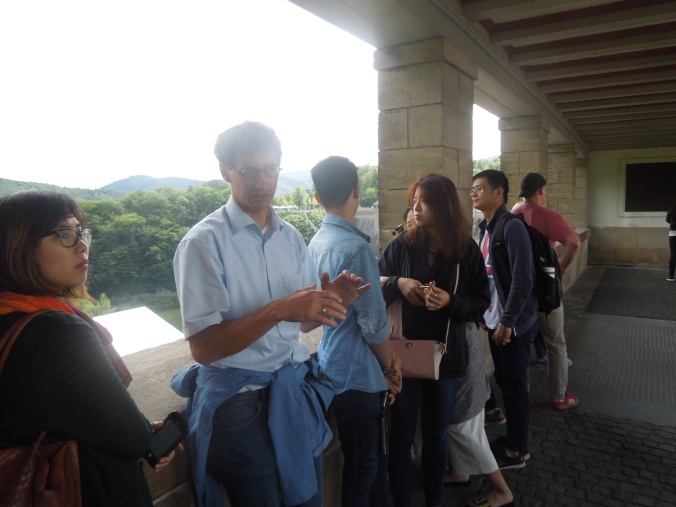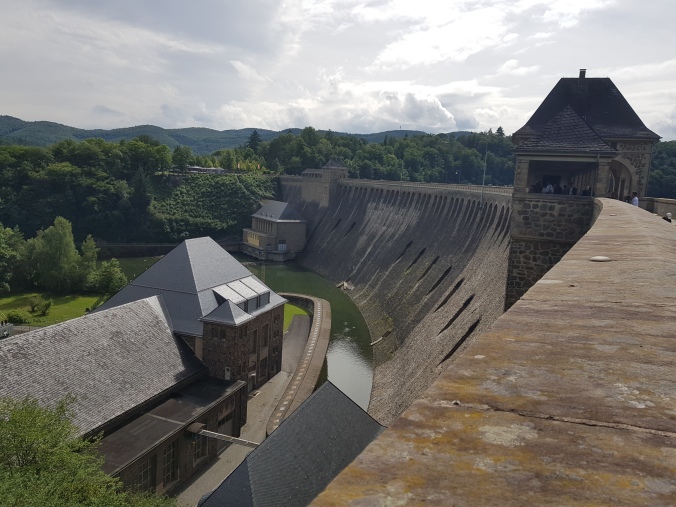WoQuaz Fraunhofer Institut für Graphische Dataverarbeitung IGD, Weiterstadt – Smart living in practice.
On Thursday 29th July we started our long trip with one of the ISU member, Mona Ahlheim, throughout the state of Hessen. The ISU team booked a bus for us so that we could travel comfortably. We were accompanied by Professor Ingo Jeromin and Professor Carsten Zahout-Heil to Kassel. The first stop was at WoQuaz (short for “Wohn-und Quartier-Zentrum”), a smart building in Weiterstadt designed for elderly people and people with disabilities. Fraunhofer Society, a globally well-known applied research organization, is responsible for the smart systems deployed in the 22 private apartments and 11 rooms of the WoQuaz building.

Wohn-und Quartier-Zentrum
We were first introduced through a presentation to the functioning of the embedded sensing and perception systems. We then had a guided tour in one of the private apartments. The floor is fitted with CapFloor, which consists of a grid of wires with sensors at the edges, so the exact location of the resident is known at all times. Thus, when the residents either fall or take abnormally long hours in the bathroom an automatic phone call is made, first to the resident, then to his or her neighbour and, if none of these calls is answered, the staff receives a call. The air quality of the rooms is constantly monitored and the lights can also be turned off in case the residents forget to do so. Furthermore, these intelligent home services not only provide an assisted living but they are also energy efficient. The building uses solar energy for heating up water and rain water for toilet utilities.
At first, we thought that all this technology and comfort must be expensive, but the rent for a smart apartment, including internet, landline, heating and electricity only costs around 20€ per sq. meter: the technology implemented for energy efficiency actually reduces the operating costs of the building.
Edersee
After having lunch at WoQuaz, our bus drove us to Edersee. Unfortunately, the sky was cloudy so we couldn’t swim in the lake as expected but the weather was fine enough so that we could enjoy a peaceful view of the lake from the top of the dam and have a stroll in the town. Professor Jeromin and Professor Zahout-Heil both explained the operation system of the hydropower station present there and the history of the dam. Located in North Hessen and operated by E-ON, the Edersee dam was constructed to control the water level of the river Eder. However, it became a strategic target for attacks during the Second World War. At that time, the German had installed nets inside the river, used to catch underwater torpedos. Nevertheless, the British developed “jumping” bombs that rotated at a speed of 400 km/h in order to jump over these nets. As such, the dam was destroyed and the water flowed as far as 30 km downstream flooding nearby villages and killing around 70 people. After the war, the dam was reconstructed and the villages were moved to another area. This explanation concluded our first educational day trip and we used our free time to have some delicious currywurst (sausage with curry topping) and ice cream near the dam before traveling to Hotel Astoria in Kassel.

Professor Jeromin explaining the history of the dam

The dam in the Eder river